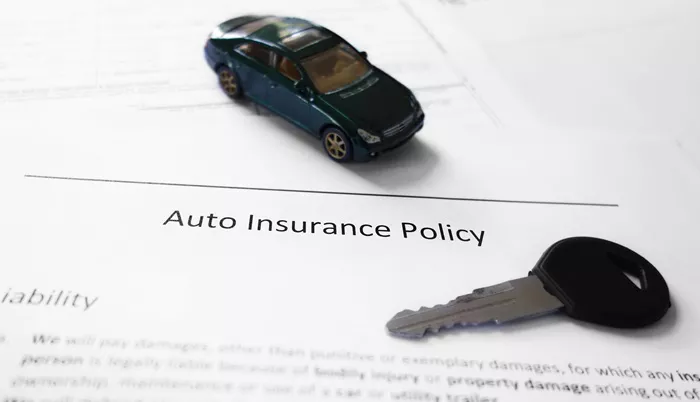Leasing a car is an attractive option for many drivers who want to enjoy the benefits of driving a new vehicle without the long-term commitment of ownership. However, leasing a vehicle comes with specific insurance requirements that are often more stringent than those for owned vehicles. Understanding these requirements is crucial for lessees to ensure they are adequately protected and compliant with their lease agreements. This essay will explore the various insurance coverages typically required by leasing companies, state-specific insurance requirements, the importance of gap insurance, cost considerations, and contractual obligations related to leasing car insurance.
Leased Car Insurance Requirements
Coverage Beyond State-Mandated Minimums
When leasing a car, the leasing company usually mandates insurance coverage that goes beyond the state-required minimums. This is because the leasing company retains ownership of the vehicle and wants to ensure its investment is adequately protected. As a result, lessees must secure more comprehensive coverage to meet the terms of their lease agreement.
Standard Coverages Required
Bodily Injury Liability: This coverage pays for injuries that the lessee or other authorized drivers cause to other people in an accident. Leasing companies typically require higher limits than state minimums to cover substantial medical expenses, legal fees, and settlements.
Property Damage Liability: This coverage compensates for damage that the lessee or other authorized drivers cause to someone else’s property. Like bodily injury liability, leasing companies often require higher limits to ensure adequate protection against costly claims.
Comprehensive Coverage: This coverage pays for damage to the leased vehicle caused by non-collision events, such as theft, vandalism, fire, natural disasters, and falling objects. Leasing companies require this coverage to protect the vehicle from a wide range of risks.
Collision Coverage: This coverage pays for damage to the leased vehicle resulting from a collision with another vehicle or object. It is crucial for covering repair costs or vehicle replacement if the lessee is involved in an accident.
State-Specific Requirements
Insurance requirements for leased cars can vary significantly by state. Each state sets its minimum insurance standards, which typically include liability coverage, but leasing companies often require additional protections.
Minimum Insurance Requirements by State
Each state in the U.S. has specific minimum liability insurance requirements. These requirements usually include:
Bodily Injury Liability: Typically expressed as a split limit (e.g., $25,000 per person and $50,000 per accident).
Property Damage Liability: Often required at a minimum level (e.g., $25,000 per accident).
However, these minimums are often insufficient for leased vehicles, as leasing companies require higher limits to safeguard their interests. For example, while a state might mandate $25,000 in bodily injury liability per person, a leasing company may require $100,000 or more.
Additional Required Coverages
In addition to liability coverage, certain states may require:
Uninsured/Underinsured Motorist Coverage: This coverage protects the lessee if they are involved in an accident with a driver who has insufficient or no insurance. Some states mandate this coverage, and leasing companies may require it to ensure the lessee is protected against such risks.
Personal Injury Protection (PIP): Also known as no-fault insurance, PIP covers medical expenses and, in some cases, lost wages and other damages, regardless of who is at fault in an accident. PIP is required in states with no-fault insurance laws and may be required by leasing companies in these states.
Gap Insurance
Importance of Gap Insurance
Gap insurance is a crucial consideration for lessees because it covers the difference between the car’s actual cash value and the amount owed on the lease in the event of a total loss. Since leased vehicles often depreciate quickly, the settlement from a standard insurance policy might be insufficient to pay off the remaining lease balance. Gap insurance ensures that the lessee is not financially burdened with this shortfall.
Is Gap Insurance Required?
Many leasing companies require lessees to purchase gap insurance as part of the lease agreement. Even if it is not mandated, it is highly recommended due to the financial protection it offers. Without gap insurance, a lessee could face significant out-of-pocket expenses if the leased vehicle is totaled or stolen and not recovered.
Protection Provided by Gap Insurance
Gap insurance can be particularly beneficial in scenarios such as:
Total Loss: If the leased car is totaled in an accident, the insurance company will pay the vehicle’s actual cash value, which may be less than the remaining lease balance. Gap insurance covers this difference, ensuring the lessee does not owe additional money.
Theft: If the leased car is stolen and not recovered, the payout from the comprehensive coverage may not cover the remaining lease payments. Gap insurance bridges this gap.
Insurance Costs
Higher Costs for Leased Cars
Insuring a leased car often costs more than insuring a purchased car. This is primarily due to the higher coverage limits and additional coverages required by leasing companies. Comprehensive and collision coverages, in particular, can significantly increase the premium costs. Moreover, the mandatory inclusion of gap insurance adds to the overall expense.
Tips to Reduce Insurance Costs
Despite the higher costs associated with leasing car insurance, there are several strategies lessees can employ to manage and potentially reduce their insurance premiums:
Shop Around: Comparing quotes from multiple insurance providers can help lessees find the best rates. Each insurer assesses risk differently, so shopping around can result in substantial savings.
Bundle Policies: Many insurance companies offer discounts for bundling multiple policies, such as home and auto insurance. Lessees can take advantage of these discounts to lower their overall insurance costs.
Look for Discounts: Insurers often provide various discounts, such as for safe driving records, installing anti-theft devices, or completing defensive driving courses. Lessees should inquire about all available discounts.
Increase Deductibles: Opting for a higher deductible can reduce the premium. However, lessees should ensure they can afford the deductible amount in the event of a claim.
Maintain Good Credit: Insurers frequently use credit scores to determine premiums. Maintaining a good credit score can help lessees secure lower rates.
Contractual Obligations
Listing the Leasing Company as Additional Insured and Loss Payee
Lessees must list the leasing company as an “additional insured” and “loss payee” on their insurance policy. This requirement ensures that the leasing company is notified of any policy changes and is a beneficiary of any insurance payouts. The “additional insured” status provides the leasing company with protection under the liability coverage, while the “loss payee” designation ensures that any claim payments for damage to the vehicle go directly to the leasing company.
Consequences of Not Meeting Insurance Requirements
Failure to meet the insurance requirements set by the lease agreement can lead to severe consequences. If a lessee does not maintain the necessary coverage, the leasing company may:
Purchase Force-Placed Insurance: The leasing company can buy insurance on behalf of the lessee, known as force-placed insurance. This coverage is typically more expensive than standard insurance and provides limited protection, increasing the lessee’s financial burden.
Lease Termination: The leasing company may have the right to terminate the lease agreement if the lessee fails to maintain the required insurance coverage. This can result in additional penalties and fees for the lessee.
Financial Liability: In the event of an accident or damage to the vehicle, the lessee may be held personally liable for costs that exceed the coverage provided by the force-placed insurance or the insufficient coverage.
Conclusion
Leasing a car involves meeting specific insurance requirements that often exceed state-mandated minimums. Lessees must secure adequate bodily injury and property damage liability coverage, as well as comprehensive and collision coverages, to comply with leasing agreements. Additionally, state-specific requirements may necessitate uninsured/underinsured motorist coverage and personal injury protection.
Gap insurance is an essential component of leasing car insurance, protecting lessees from financial shortfalls in the event of a total loss. Insuring a leased car can be more expensive, but lessees can take steps to manage these costs, such as shopping around, bundling policies, and maintaining good credit.
Finally, lessees must fulfill their contractual obligations by listing the leasing company as an additional insured and loss payee. Failure to comply with insurance requirements can result in force-placed insurance, lease termination, and significant financial liability. By understanding and adhering to these insurance requirements, lessees can enjoy the benefits of driving a leased vehicle while ensuring they are adequately protected and compliant with their lease agreements.
FAQs About Car Insurance for Leased Vehicles
1. What insurance is required to lease a car in Florida?
In Florida, leasing companies typically require lessees to carry more than just the state-mandated minimum insurance coverage. Generally, lessees must have liability insurance with higher limits, as well as comprehensive and collision coverage to protect the leased vehicle. The exact insurance requirements may vary depending on the leasing company and the terms of the lease agreement.
2. What is full coverage car insurance in California?
“Full coverage” car insurance in California typically refers to a policy that includes liability coverage, comprehensive coverage, and collision coverage. Liability coverage pays for damages to other vehicles and property if you’re at fault in an accident. Comprehensive coverage provides protection against non-collision events such as theft, vandalism, and natural disasters. Collision coverage pays for damage to your vehicle in the event of a collision with another vehicle or object.
3. How much is insurance on a leased car in Florida?
The cost of insurance on a leased car in Florida can vary based on several factors, including the lessee’s driving record, the type of vehicle being leased, the desired coverage limits, and the insurance provider. Typically, insuring a leased car may be more expensive than insuring a purchased car due to the higher coverage requirements imposed by leasing companies.
4. Do I need to buy liability insurance when renting a car in Florida?
Yes, if you’re renting a car in Florida, you are required to have liability insurance. Florida law mandates that all drivers carry a minimum amount of liability insurance to cover damages they may cause to others in an accident. However, if you already have auto insurance that includes liability coverage, it may extend to rental cars. It’s essential to check with your insurance provider to confirm coverage details before renting a car.
You Might Be Interested In




















